Traditional Korean Dress: Your Guide to Hanbok
Hanbok Vocabulary, Variations and… Free Entry to Attractions When You Wear One in Korea?!
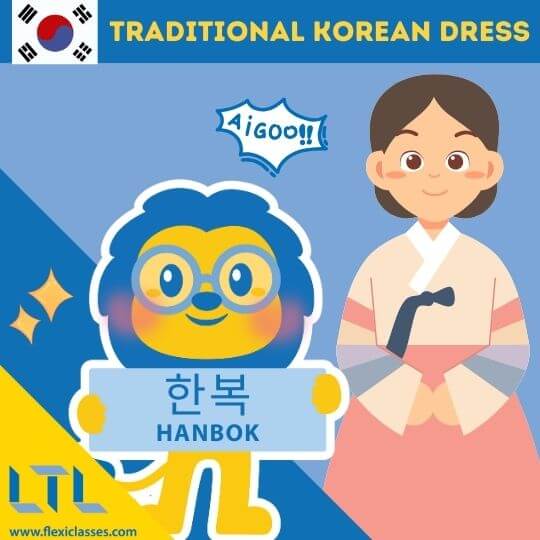
Every country has its traditional costume that represents the country. Korea’s national dress, known as Hanbok, was worn since the Three Kingdoms period (57BC-668AD).
한 (han) means Korea and 복 (Bok) means clothing which literally translates to ‘Korean clothing’. Chinese and Persian designs greatly influenced the first designs of the Hanbok.
The designs and shapes of the Hanbok have changed over time from the Goguryeo Dynasty to the late Joseon Dynasty. The modern hanbok resembles the designs from the late Joseon Dynasty with short tighter tops and loose skirts.
Hanbok was a usual attire worn by civilians and royalty in the past.
But in the modern world, the hanbok is worn only for special occasions like marriages or holidays such as the Lunar New Year.
Let’s dive into the world of Hanbok!
⬇️ Interested in something in particular? Clicking on the link will bring you to your preferred section!
Traditional Korean Dress | Basic Parts of Hanbok
Traditional Korean Dress | Variations of Hanbok
Traditional Korean Dress | How is Hanbok Made
Traditional Korean Dress | Modern Hanbok
Traditional Korean Dress | Did You Know?
Traditional Korean Dress | Quiz
Traditional Korean Dress | FAQ
Traditional Korean Dress | Basic Parts of Hanbok
Hanbok is made up of two parts.
For women
The upper part is called 저고리 (jeogori) which is a long sleeve short-hemed V-neckline top that closes with straps called 고름 (goreum). It is matched with a 치마 (chima), a high-waisted wrap-around skirt.
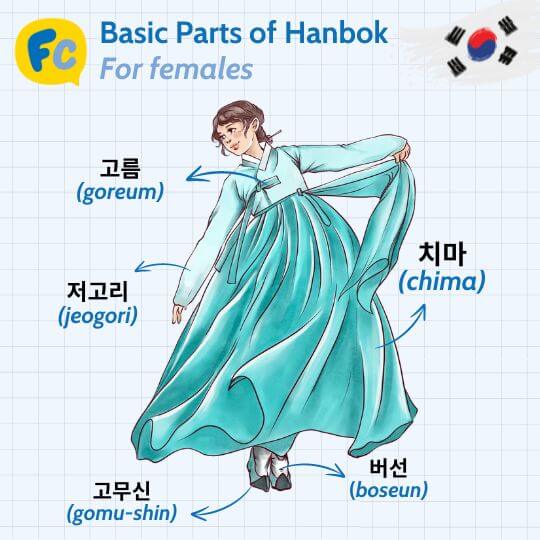
The outfit is completed with white puffed socks called 버선 (boseun) and rubber shoes called 고무신 (gomu-shin). Sometimes an open-placket vest called 배자 (be-ja) was worn over the top and skirt for extra warmth.
During winter ladies wear a long overcoat called 두루마기 (durumagi) with a 휘항 (hwee-hang) a warm coverall hat.
🌤 The 두루마기 (durumagi) served as a coat for warmer weather and also a must-wear outer piece for formal gatherings.
For men
The upper part of a male’s Hanbok is also called 저고리 (jeogori) which drops down to ankle length. It is worn with 바지 (baji), a Korean word for trousers that are loose fit.
Hanboks were designed to be loose for practical reasons. Loose-fitting cuts make it easier for people to move around and sit on the floor.
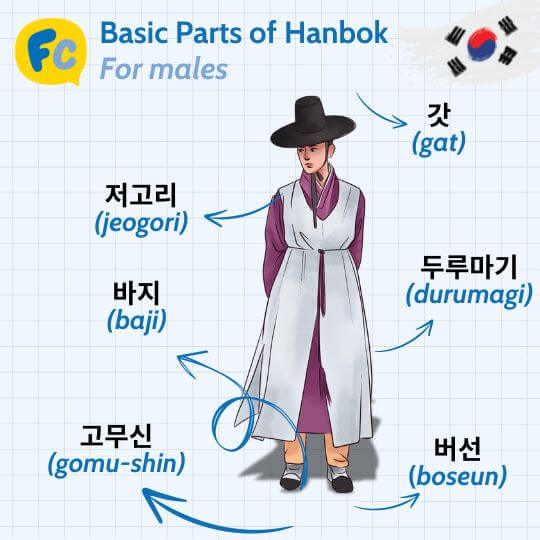
버선 (boseun) – socks, 고무신 (gomu-shin) – rubber shoes, 두루마기 (durumagi) – overcoats are also worn by male to complete the attire.
Upper-class men loved wearing a special hat called 갓 (gat) made of bamboo or horse hair that had a high peak and was semi-transparent.
Traditional Korean Dress | Variations of Hanbok
The variations in the Hanbok also distinguished social ranks and marital status.
Generally, the upper class and singles wore brightly colored Hanboks with detailed embroideries while the lower class wore plain color Hanboks. A simple white ramie top with an indigo colored skirt was worn by married women.
A specific 저고리 (jeogori) with contrasting trims on the placket and cuffs was called 반화장 저고리 (ban-hwa-jang jeogori) and was only worn by married women.
The main materials used for making Hanbok are silk, hemp, ramie, and cotton. Silk was considered a luxury in the past and was cherished by royalty.
What Wealthy People Wore in History
💰 Wealthy people wore intricately detailed Hanbok made with high-quality silk. The reason why silk was a coveted material was its softness and luxurious shimmer effect.
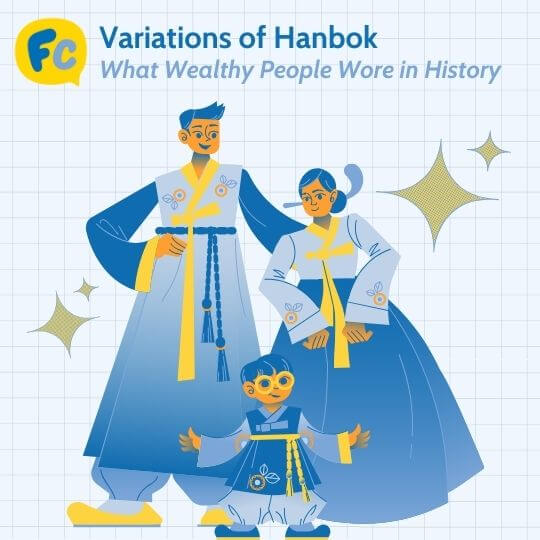
Embroideries and gold threads were usually used to decorate the clothing. The wealthier, the colorful your Hanbok was.
What Working Class and Lower Class People Wore
In general, working-class people wore Hanbok made with cotton or hemp.
Their Hanboks were designed more practically to be comfortable when working. Colors were usually lighter and down to earth with minimal or no decorations.
Traditional Korean Dress | How is Hanbok Made
Another interesting fact is that, unlike Western clothing where draping and fitting on three-dimensional mannequins was crucial, Korean Hanboks were cut and sewn on a flat surface.
This reduced fabric waste. Any fabrics that remained were reused as decorative embroideries or patchworks on Hanboks.
A popular way extra fabrics were re-used was on the 저고리 (jeogori) where they combined multiple colored stripes on the sleeves. Due to the vibrant colors, it is also referred to as 색동저고리 (saek-dong jeogori) meaning multi-colored sleeve top.
It was mostly worn by youths below the age of 10. This was a popular top to wear for special occasions like birthdays or holidays.
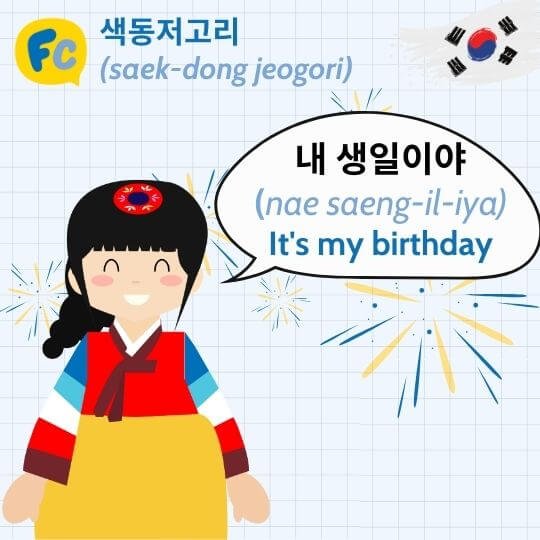
In recent years 색동저고리 (saek-dong jeogori) has been popularly worn during the 1st birthday celebration of Korean babies called 돌잔치 (dol-jan-chi).
돌 (dol) means 365 days since birth. Koreans still use this expression by putting first, second, or third to indicate the baby’s age.
| Korean Term | Transliteration | Meaning | Explanation |
|---|---|---|---|
| 돌 | dol | 365 days since birth | Used to indicate a baby’s age. |
| 첫돌 | cheot dol | First birthday | 첫 (cheot) means ‘the first’. |
| 두돌 | du-dol | Second birthday | 두 (du) means ‘the second’. |
| 세돌 | se-dol | Third birthday | 세 (se) means ‘the third’. |
Traditional Korean Dress | Modern Hanbok
The Modern Hanbok is similar to those of the late Joseon Dynasty.
Now, more variations with modern cuts and more practical designs have been introduced. Although traditional style Hanbok is worn for special occasions, many 개량한복 (ge-ryang-han-bok) or contemporary Hanbok is worn in casual settings. The cuts and materials were updated to fit contemporary designs.
Many Koreans still wear Hanbok and conduct 폐백 (paebaek), as a post-wedding ceremony. 폐백 (paebaek) is a short traditional ritual that was part of a long traditional wedding back in history. 폐 (pae) means ‘gift giving to show respect’ and 백 (baek) means silk. It was a tradition of providing silk as a gift to show respect.
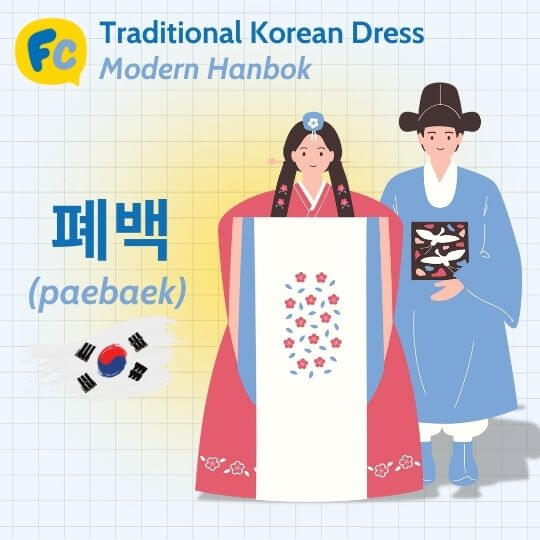
This was originally a ceremony for the bride to visit the groom’s family to greet and pay respect in joining the family.
Now, the 폐백 (paebaek) is conducted together with the bride and groom wearing traditional Hanbok. Bowing to the in-laws, tea ceremony, and catching chestnuts and dates are part of the ritual for a healthy marriage and fortune.
Traditional Korean Dress | Did you know?
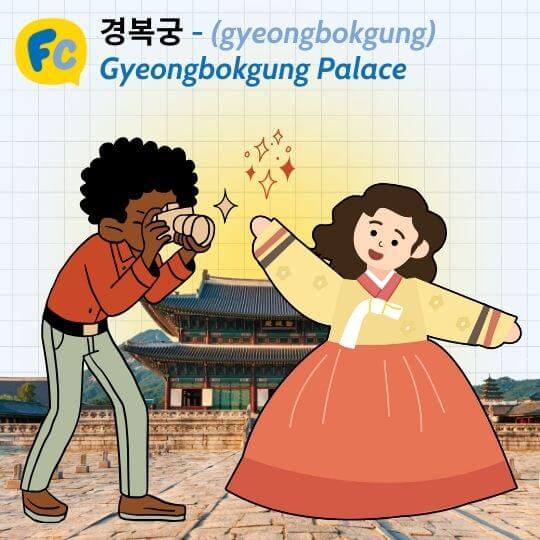
Admission to all 5 palaces in Korea is free if you wear a Hanbok upon entrance.
You are able to rent Hanbok at very reasonable costs around the major attraction areas.
The most popular place to visit is 경복궁 (gyeongbokgung) – Gyeongbokgung Palace.
It is considered one of Korea’s iconic landmarks. It was built in 1395 and served as the main royal palace of the Joseon Dynasty.
📌 Did you know? Meeting many people wearing Hanbok in front of Gyeongbokgung Palace is common. You’ll see tourists and locals taking pictures and enjoying the beautiful architecture of the palace.
Learning about history is a great way to deep dive into culture. We hope that the
history of Hanbok has taught you about the traditions and values of Koreans.
It’s also great to know that some traditions are still followed and carried on.
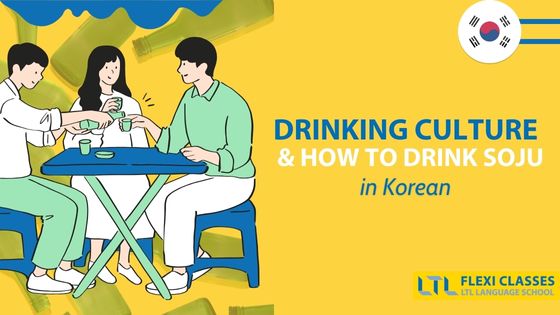
Drinking Culture in Korea: How to Drink Soju 🍶
The Fascinating World of Soju – Master the Art of Korean Drinking Culture! ✨Social drinking is more than just a simple night out with friends. It is a culture that Koreans often find as an opportunity to open up and…
USEFUL PHRASES
Here’s your need-to-know list of vocabulary👇
| Korean | Transliteration | English |
|---|---|---|
| 한복 | Hanbok | Traditional Korean clothing |
| 저고리 | Jeogori | Upper garment of Hanbok |
| 치마 | Chima | Skirt worn by women |
| 바지 | Baji | Trousers worn by men |
| 버선 | Boseun | Traditional Korean socks |
| 고무신 | Gomu-shin | Rubber shoes |
| 두루마기 | Durumagi | Overcoat worn over Hanbok |
| 갓 | Gat | Traditional hat worn by men |
| 반화장 저고리 | Ban-hwa-jang Jeogori | Jeogori with contrasting trims for married women |
| 색동저고리 | Saek-dong Jeogori | Multi-colored sleeve top |
| 돌잔치 | Dol-jan-chi | First birthday celebration |
| 폐백 | Paebaek | Traditional post-wedding ceremony |
| 경복궁 | Gyeongbokgung | Gyeongbokgung Palace, a historical site |
| 개량한복 | Ge-ryang-han-bok | Modern or contemporary Hanbok |
| 전통 | Jeontong | Tradition |
| 문화 | Munhwa | Culture |
| 왕실 | Wangsil | Royalty |
| 소셜 계급 | Sosyeol gyegeup | Social class |
| 재료 | Jaeryo | Material (used in making Hanbok) |
| 의복 | Eui-bok | Clothing or attire |
Traditional Korean Dress | Quiz
Traditional Korean Dress | FAQ
What is the traditional Korean dress called?
The traditional Korean dress is known as 한복 Hanbok. 한 (Han) means Korea and 복 (Bok) means clothing which literally translates to ‘Korean clothing’.
What is a Hanbok?
A hanbok is a traditional Korean garment characterized by vibrant colors, simple lines, and elegant, flowing designs, typically worn during festivals, celebrations, and special occasions.
Is Hanbok still popular among seniors?
Yes, some seniors still prefer wearing Hanbok due to its loose cuts. It feels more comfortable than modern clothing.
What’s another popular area I can visit for free wearing Hanbok?
창덕궁 (Changdeokgung) is another beautiful palace you can visit.
Where is a must-visit place in Seoul Wearing Hanbok?
Where is a must-visit place in Seoul Wearing Hanbok?
Want More From LTL?
FANCY LEARNING KOREAN? Check out our online Korean courses here.
We offer a 7-day free trial to all online students where you can study Korean 24/7.
Want to study Korean in Korea instead? Our Korean courses in Seoul can either be taken in small groups of no more than 5 students or individually for a more tailored experience.
We even offer incredible homestay experiences in Seoul too.
To top it all off, it certainly doesn’t end with Korean. Check out the other languages we teach 👇🏻










